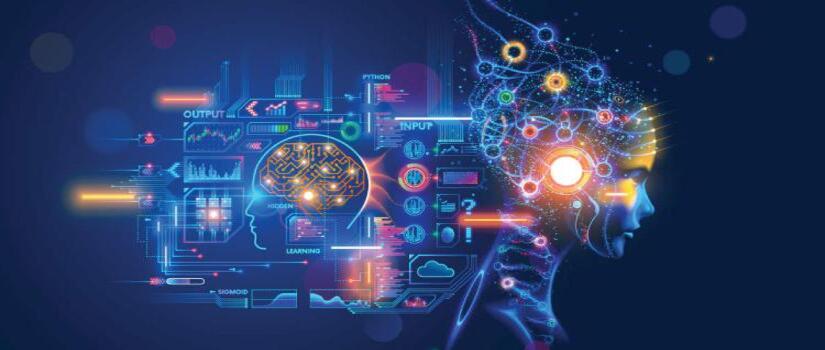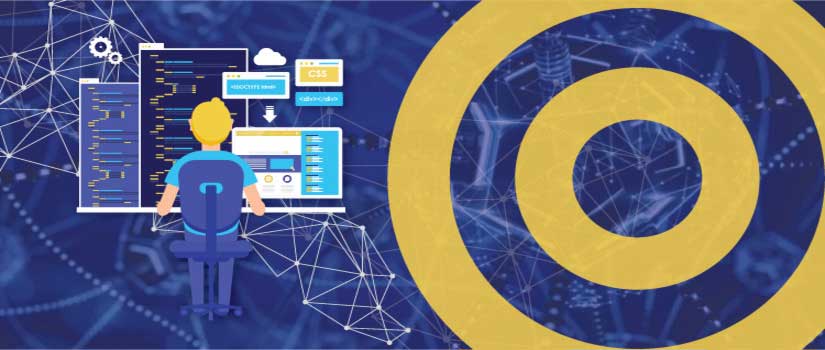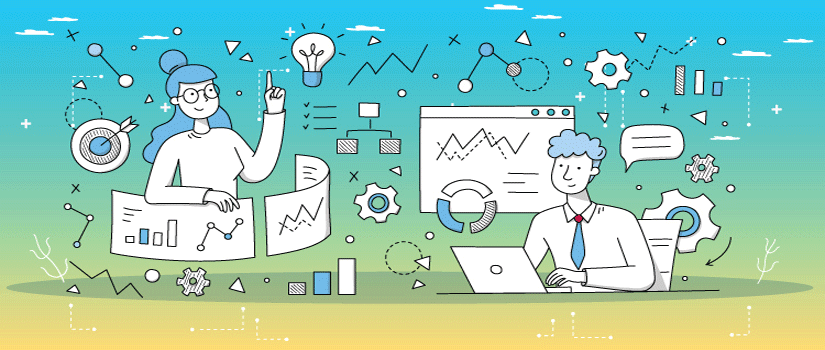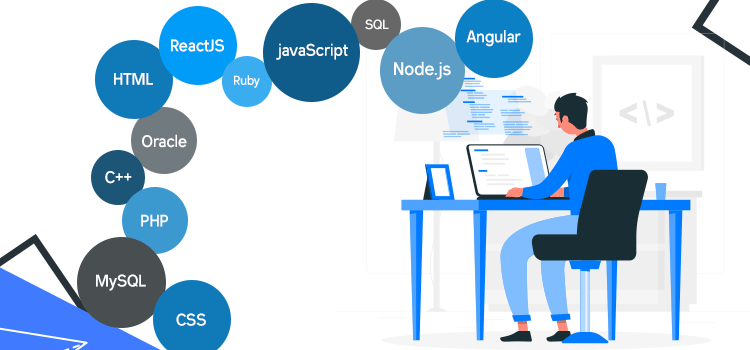Machine Learning has made great progress in the last decade and has found its place in many industries. With advances made in Machine Learning technologies, now is a good time to ask ourselves how we can improve the User Experience of our products with machine learning.
When we build a new feature/application, we are always focused on making it easy and power-packed for our users. We try to understand how to make our customers’ lives easier and in the process push boundaries. In the past, we have seen some great successes using Machine Learning to better our product. In this blog, we will cover the use of ML in our product to create a 10x better experience for the user base.
If you're an entrepreneur, you want to have happier, more productive customers. Today's customers are getting increasingly frustrated with software and tech support. They're demanding a better experience, and machine learning can help you deliver it!
Technologies are evolving at an incredibly fast rate. Machine learning is a technology that helps us figure out our customers’ needs through big data and make decisions that would ultimately lead to a positive user experience.
Here are some ways machine learning can improve your user experience but first let us dissect what user experience is.
What is User Experience
Thanks to the new advancements in technology, more and more artificial intelligence companies are focused on building algorithms that assist in improving user experience by optimizing a wide range of features from personalization to home automation.
Imagine you are on a new project and your client wants to see the most beautiful design ever. What would you do? You'd probably create some wireframes for discussion, use your creativity to come up with something beautiful but functionally simple.
This is what designers usually do in their projects, after all, we are the front-end part of the project, and we have to take care of it and deliver an aesthetically pleasing experience.
Having a better user experience increases the value received by the customer. It will also increase your chance of repeat business. It is, therefore, necessary to involve actual users in the design process. In fact, it is an essential foundation of understanding this whole subject.
The user experience may be one of the hardest components to build for a mobile application and one that is most highly regarded by those that have tried numerous applications. With other factors to consider such as reliability, ease of use and performance, a focus on your user experience can help you bring your app to the forefront of the market.
User experience, or UX for short, is a measure of the ease of use provided when interacting with a particular product, system or service. User experience (UX) is the term given to how people feel when interacting with a product, system or service. It's about perception: making sure that products are easy to use, that they look good and work well. It is all about emotional connection.
User experience design is the process of making your website better to use from the user’s perspective. This process involves focusing on tasks, goals and other behaviours of the people who visit your website for what they want to do and how you can help them accomplish it faster. When we talk about UX, having a positive experience is what counts. That means that every time your user engages with your website, it’s taking him closer to his goals.
If you are building a machine learning model that uses data to provide intelligent predictions or an application that shows ads based on historical user activities, machine learning is something you need to consider in your project. Here are different ways machine learning is improving user experience.
We are focusing on ML, not its relation to user experience or what role it plays in the field but rather what improvements it can do to the UX. Great UX is about great experiences. But the future of great User Experience is ML.
It’s just a matter of time before artificial intelligence brings major changes to how we interact with websites. In fact, it’s already happening. You might even be surprised by its effects on user experience (UX).
Machine learning and artificial intelligence (AI) are poised to have a significant impact on user experience, and that’s only the tip of the iceberg. As we have seen in the past, they are growing at rapid rates within organizations. With this growth comes more opportunities for AI to invade the digital world and ultimately become part of the user experience.
For a better user experience, AI can make edits to surroundings. It can find things in a scene that will help the users feel comfortable and help them to focus more on content. Nowadays artificial intelligence is being used in many different industries including e-commerce, social media, chatbots, and so on.
The beauty of AI is its ability to automate human labour and allow us to do the things that we were meant to do explore, create, innovate, and push forward as a civilization.
A recent Forrester Research states that 63% of digital marketers believe machine learning is important to their organization’s success. While AI isn’t new, the number of vendors entering the space and expanding its capabilities is growing exponentially.
Today, major players such as Google, Amazon, IBM, and Microsoft are redefining how we interact with computers as we know it. While this change brings about a myriad of opportunities for brands big and small, most businesses are still struggling to figure out how they can implement AI without taking up too much time and resources.
Regardless, the future of machine learning in UX cannot be questioned.
Let us see piece by piece how ML is improving the user experience.
Personalization
Personalization is the future of marketing. It's highly adored, growing in popularity and it helps you to drive more conversions. Personalization, engagement, conversion and retention are the challenges facing marketers today.
It is no longer enough to create content that works for one type of user. Content is increasingly built by harnessing the power of artificial intelligence and machine learning technologies. Article recommendations, for example, can now appear based on an individual’s online activity, taste profile, and so on. One of the most important factors in a successful digital marketing strategy involves giving users exactly what they want when they want it and how they want it. A personalized approach ensures better brand recognition and experience.
This is done by analyzing data, and the way customers use websites, apps. This technology aims to provide individuals with the most efficient and useful content possible. It can be used for targeted advertising as well, which goes hand in hand with personalized marketing.
Intelligent Algorithms
There is an enormous amount of data on the internet and almost every kind of application uses a significant amount of data in one way or another. This has led to the development of machines that can find patterns in the data, organize it and clean it. When you combine these machines with social media, online shopping and big data technologies you get algorithms that can efficiently analyze customer behaviour and help make better business decisions. Of course, there are still several areas where machines can grow even more intelligent.
Intelligent algorithms collect and analyze data about user activity and set predictive triggers based on those patterns. Machine learning generates software that learns from experience. This requires less programming by the human programmer and instead relies on statistical analysis to automatically learn and improve. The more data you give your intelligent algorithm, the better it becomes at predicting outcomes based on predefined patterns.
Machine learning is a powerful tool for making computers smarter. Its application has become more commonplace in our social and business lives, and come to make up a big part of content delivery networks (CDNs), email marketing platforms, and myriad other applications.
When used appropriately, intelligent algorithms can ensure you target customers more effectively, leading to a better overall user experience when using your product.
Machine learning algorithms are getting better every year, providing us with high-precision products that are extremely cost-effective to deploy. Internet search engines such as Google, Yahoo and Bing use machine learning algorithms to provide personalized search results to their users.
Deep Learning
What is deep learning? It’s a subfield of machine learning that uses neural networks for seven different goals. One of these goals is deep learning, which is useful for applications like image and video classification and generation. Deep learning can also improve the performance of natural language processing (NLP) systems (like chatbots).
Deep learning is expensive in terms of computing time and data size and is not used for all tasks. But it tends to outperform traditional machine-learning techniques by a large margin in certain applications.
User experience (UX) is a key challenge in modern web development. Web applications get more complex every year, as the number of features grows. For example, think about the features of a modern e-commerce website: product search, filters, infinite scrolling, and special browsing modes (e.g. for mobile devices). All these different features interact with each other, which creates impossible conditions for usability experts to test all combinations and find a bug in each one of them.
The majority of users don’t read pages. They crawl, scan and skim the Internet. It is crucial for design to use algorithms that maximize legibility. While optimized site architecture allows people to quickly find relevant information from the page, UX designers need to consider user’s needs at deeper levels.
Machine learning is becoming increasingly relevant to user experience design. As the sophistication of algorithms grows, machines are overtaking their human counterparts in understanding users and implementing human-like behaviors. With machine-generated analytics, marketers can measure the efficacy of not only single campaigns but individual user interactions. Deep learning is enabling machines to understand users and anticipate their needs more holistically than ever before.
Quantitative Usability Testing
Over the last decade, usability testing has become a standard part of the software development process. Most companies either conduct internal testing or engage third-party groups to conduct some form of user research to improve their designs and interfaces.
However, most types of usability testing have a single dimension. They focus on how they affect users’ cognitive abilities how easy it is to learn, memorize, and understand them. While cognitive evaluations are extremely important, they fail to evaluate one of the most important aspects of interfaces – the emotional experience created by using these products and services.
Quantitative Usability Testing UX is a combination of A/B testing and multivariate testing used to boost user conversion with a focus on conversions that are based on-site interaction data and statistical analysis. It is a research method that involves measuring the performance of a task on users using different variations
The quantification of a user's experience is an important path to improving it. But the task is far from trivial. The approach must be properly balanced for accurate results to be derived and translated into actions that ensures that usability is enhanced and technology's purpose of improving usability is realized.
We believe that user experience testing is the best way to improve the usability of a product. However, it requires collaboration between different teams (design and product). It is also time-consuming. Machine learning can however take over the time-consuming part.
Chatbots
Chatbots help to create a more personalized UX and allow you to reach a wider audience. Most chatbots just can’t understand what users expect from them. And even if they do understand, something is missing in helping chatbots to achieve the true goal of “helping customers and make them happy”. That’s where machine learning comes in. It helps Chatbot Developers with building the right architecture to achieve successful communication between users and bots.
With leading companies like Facebook, Microsoft, IBM and Google investing in this new technology, chatbots are not just a fad. Chatbots are powered by artificial intelligence and are designed to automate simple customer service tasks like answering questions or helping people find information on the company’s website.
A recent study found that machines are more effective at customer service depending on the task. For specific customer requests like price checks, chatbots and human agents are just as efficient as humans. Language can be tricky and difficult to navigate. Every language comes with its set of intricacies. The good news is that machine learning can help us to overcome these challenges.
A chatbot is a great way to interact with your client on a personal level and allows you to create an outstanding user experience for your customers.
Emotion AI
An emotional connection is a driving force behind any successful relationship, whether it's with your partner, best friend or someone you've just met. So it makes sense to believe that the stronger this bond is, the better your experience of a product will be. This is the premise behind Emotion AI.
AI is becoming more prevalent in our daily lives and is progressing rapidly. Emotion AI is a tool that can help the online experience run smoother and bring value to customers.
Emotion AI is any application that uses machine learning to analyze the facial expressions and calculate the emotions being portrayed by the person in the image
Emotion AI allows people to automatically monitor their emotions, and identify reasons for mood swings. It provides tools to understand what you are feeling and the reasons for those feelings.
This technology opens up many doors in the business world as well as in education and healthcare.
Data Analysis
Data analysis has changed a lot over the past several years. Machine learning algorithms are becoming increasingly popular in data analysis as they automatically train themselves using existing information and automatically improve.
Companies all around the world are constantly collecting and analyzing data in an attempt to better understand users, improve services, and boost profits. One of the most interesting sources of data for companies is Google Analytics which provides information on a wide range of areas. At the same time, one of the biggest challenges for companies is rectifying this data into useful information.
All the major tech giants such as Google, Microsoft, Amazon are pouring billions of dollars into Artificial Intelligence research for its wide range of applications, such as image recognition, automated translation, speech to text processing and recommendation systems. Although machine learning has been there for decades, with the advancement in big data and cloud computing its techniques have become increasingly effective and widely used.
A/B testing, customer satisfaction surveys and usability tests are all used to assess your customers' preferences. It's hard to do this manually with more than a few dozen users since you're bound by human error, but with machine learning it is simple. You can analyze millions of data points in seconds without any bias. Currently, popular applications of ML include Facebook, Google, etc. Their websites use one or two recommendation algorithms to serve relevant content amidst the chaos that is on the Internet.
Automation
Automation is improving both creativity and efficiency. Let me give you an example. Google uses machine learning to do a host of things such as identify spam, tag images, and even drive cars. These use cases are just scratching the surface of what can be achieved with these tools.
Ever since users started using the internet, automation has been one of its main attractions. One of the more popular applications is search engines that predict what information you need before you search for them.
Imagine waking up to visit a customer and arrive only to find that there is an issue with the VDC in the building. The server won't boot up! All you can do is keep staring at the blank screen while waiting for the IT team to get to your location. That's frustrating, it takes hours just for a simple fix which could’ve been a matter of minutes had an engineer been sent over. In the same way, automation helps UX designers to identify only those points that require their input thus saving time and effort.
Bottom Line
Machine learning is becoming more and more present in our lives, especially in marketing, as businesses are looking for ways to be more efficient and improve their bottom line. There has been a lot of buzz around this technology because of its potential to exponentially increase productivity.
Machine learning is taking over our online experience. From shopping online to searching for a new job, AI and machine learning have introduced fascinating changes into our daily life. In fact, the trend will only evolve – Gartner predicts that by 2020, over 75% of customer engagements will be managed without humans.
Machine learning is the future, and it's already been improving the user experience for years. Google and Facebook have already made their moves with AI in their products. Served ads based on personalized preferences? Learn what you want through your searching behaviours? Yeah, that's machine learning. It's still going to be a few years before mainstream products use this for personalization, but it will happen soon enough.
There is no debate that UX and AI are inextricably linked with each other. The widespread use of AI is transforming every industry, and its presence has become less science fiction and more reality. That's why so many users expect the user experience they have on websites, apps, and customer service systems to be as intuitive as possible. Unfortunately, there's still a long way to go before we humans can develop and implement holistically. One of the best ways to get started on implementing AI is to utilize machine learning in your product or service.
Excited by the possibility to apply machine learning to improve your user experience? Together, let's alter your product. Reach out to us right now for a consultation, and let's get started on the path to amazing user experiences!










